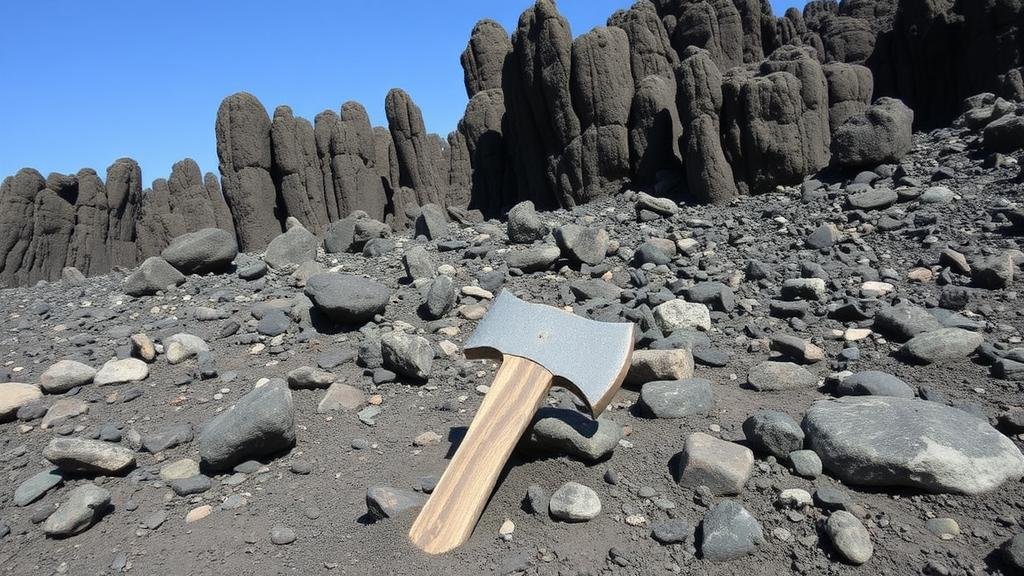Spotting Stone Axes in Areas With Volcanic Rock Formations
Spotting Stone Axes in Areas With Volcanic Rock Formations
Stone axes are critical artifacts in understanding the technological and cultural evolution of early human societies. Particularly in regions with volcanic rock formations, these tools can be prevalent due to the availability of suitable raw materials. This article explores the characteristics, significance, and best practices for identifying stone axes in volcanic regions, offering insights into their composition, use, and archaeological context.
Understanding Volcanic Rock Formations
Volcanic rock formations arise from the cooling and solidification of lava or magma. Common types of volcanic rocks include basalt, pumice, and obsidian, each possessing unique properties that inform their use as tools. For example, obsidian is known for its sharp edges, making it particularly advantageous for crafting cutting implements like axes.
- Basalt: Dense and durable, ideal for grinding tools.
- Obsidian: Glass-like and easily shaped, known for exceptional sharpness.
- Pumice: Lightweight and porous, often less suitable for axes but valuable for other tools.
The Cultural Significance of Stone Axes
Stone axes have played a crucial role in prehistoric and early historic cultures across the globe. They served not only functional purposes–such as chopping wood or processing food–but also held cultural significance, often representing status or skill within a community. For example, in Mesoamerican societies, specific finely made stone axes were associated with rituals and prestige.
- Functional Use: Primarily for agriculture, woodworking, and hunting.
- Cultural Significance: Symbol of status, craftsmanship, and community identity.
Identifying Stone Axes
Successful identification of stone axes in volcanic rock areas requires knowledge of several key factors:
- Material: Look for signs of wear or chipping, which can indicate use. Obsidian tools are often the easiest to identify due to their sheen and sharp edges.
- Shape: Traditional stone axes are typically wedge-shaped, designed for effective chopping. These characteristics help distinguish them from naturally occurring stones.
- Location: Focus on riverbeds or ancient campgrounds where volcanic material may have been readily available to early humans.
Case Studies and Examples
Numerous archaeological findings highlight the presence of stone axes in volcanic regions. One notable case is the excavation at the Chaine des Puys in France, where researchers uncovered a variety of stone tools made from local basalt and obsidian. These artifacts provided insights into the technological practices of early inhabitants who used the abundant volcanic materials for tool-making.
Similarly, studies conducted on the Pacific Islands, where volcanic activity is prevalent, revealed a range of stone axes that were not only functional but also artistically crafted, indicating the cultural complexity and skill of the inhabitants.
Best Practices for Spotting Axes
To effectively identify and study stone axes in volcanic regions, several methods can be employed:
- Field Surveys: Systematic walking surveys in known archaeological zones can yield significant findings.
- Tool Identification Workshops: Participating in or organizing workshops can enhance the recognition skills of both amateur and professional archaeologists.
- Collaboration with Local Experts: Engaging with local archaeologists or indigenous communities who possess knowledge of the area and its tools can offer invaluable insights.
Conclusion
Spotting stone axes in areas with volcanic rock formations requires an understanding of the geology, cultural context, and material characteristics. By employing systematic identification techniques and collaborating with experts, researchers can uncover important artifacts that illuminate the human past. Future studies should focus on expanding these methodologies and integrating technological advancements such as geospatial analysis for improved accuracy in locating and understanding these ancient tools.
Actionable takeaways include:
- Familiarize yourself with local geology and stone tool types.
- Participate in field surveys or workshops to build practical skills.
- Engage in interdisciplinary research to broaden the understanding of cultural implications surrounding these findings.



